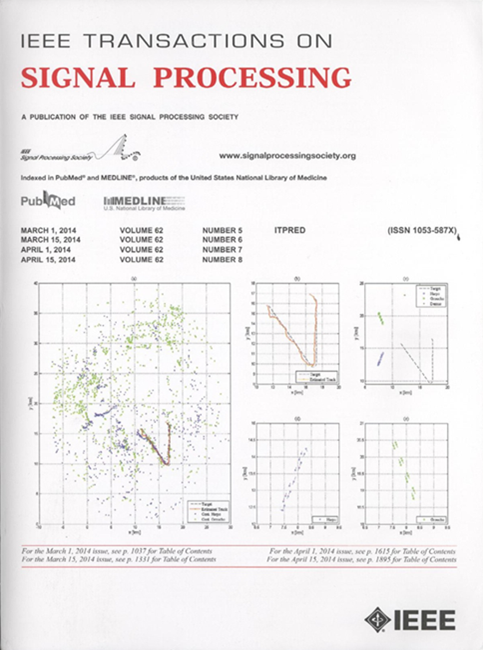Reshaping the ISAC Tradeoff Under OFDM Signaling: A Probabilistic Constellation Shaping Approach
IF 4.6
2区 工程技术
Q1 ENGINEERING, ELECTRICAL & ELECTRONIC
引用次数: 0
Abstract
Integrated sensing and communications is regarded as a key enabling technology in the sixth generation networks, where a unified waveform, such as orthogonal frequency division multiplexing (OFDM) signal, is adopted to facilitate both sensing and communications (S&C). However, the random communication data embedded in the OFDM signal results in severe variability in the sidelobes of its ambiguity function (AF), which leads to missed detection of weak targets and false detection of ghost targets, thereby impairing the sensing performance. Therefore, balancing between preserving communication capability (i.e., the randomness) while improving sensing performance remains a challenging task. To cope with this issue, we characterize the random AF of OFDM communication signals, and demonstrate that the AF variance is determined by the fourth-moment of the constellation amplitudes. Subsequently, we propose an optimal probabilistic constellation shaping (PCS) approach by maximizing the achievable information rate (AIR) under the fourth-moment, power and probability constraints, where the optimal input distribution may be numerically specified through a modified Blahut-Arimoto algorithm. To reduce the computational overheads, we further propose a heuristic PCS approach by actively controlling the value of the fourth-moment, without involving the communication metric in the optimization model, despite that the AIR is passively scaled with the variation of the input distribution. Numerical results show that both approaches strike a scalable performance tradeoff between S&C, where the superiority of the PCS-enabled constellations over conventional uniform constellations is also verified. Notably, the heuristic approach achieves very close performance to the optimal counterpart, at a much lower computational complexity.重塑 OFDM 信号下的 ISAC 权衡:概率星座整形方法
综合传感与通信被视为第六代网络的一项关键使能技术,它采用统一的波形,如正交频分复用(OFDM)信号,以促进传感与通信(S&C)。然而,OFDM 信号中嵌入的随机通信数据会导致其模糊函数(AF)的边沿发生严重变化,从而导致漏检弱目标和误检幽灵目标,进而影响传感性能。因此,如何在保持通信能力(即随机性)和提高传感性能之间取得平衡仍然是一项具有挑战性的任务。为了解决这个问题,我们描述了 OFDM 通信信号的随机 AF 特性,并证明 AF 方差由星座振幅的四分频决定。随后,我们提出了一种最优概率星座整形(PCS)方法,即在第四时刻、功率和概率约束条件下最大化可实现信息率(AIR),其中最优输入分布可通过改进的 Blahut-Arimoto 算法进行数值指定。为了减少计算开销,我们进一步提出了一种启发式 PCS 方法,即通过主动控制第四时刻的值,而不将通信指标纳入优化模型,尽管 AIR 会随着输入分布的变化而被动缩放。数值结果表明,这两种方法都在 S&C 之间实现了可扩展的性能权衡,同时也验证了 PCS 星群优于传统的均匀星群。值得注意的是,启发式方法以更低的计算复杂度实现了与最优方法非常接近的性能。
本文章由计算机程序翻译,如有差异,请以英文原文为准。
求助全文
约1分钟内获得全文
求助全文
来源期刊

IEEE Transactions on Signal Processing
工程技术-工程:电子与电气
CiteScore
11.20
自引率
9.30%
发文量
310
审稿时长
3.0 months
期刊介绍:
The IEEE Transactions on Signal Processing covers novel theory, algorithms, performance analyses and applications of techniques for the processing, understanding, learning, retrieval, mining, and extraction of information from signals. The term “signal” includes, among others, audio, video, speech, image, communication, geophysical, sonar, radar, medical and musical signals. Examples of topics of interest include, but are not limited to, information processing and the theory and application of filtering, coding, transmitting, estimating, detecting, analyzing, recognizing, synthesizing, recording, and reproducing signals.
 求助内容:
求助内容: 应助结果提醒方式:
应助结果提醒方式:


